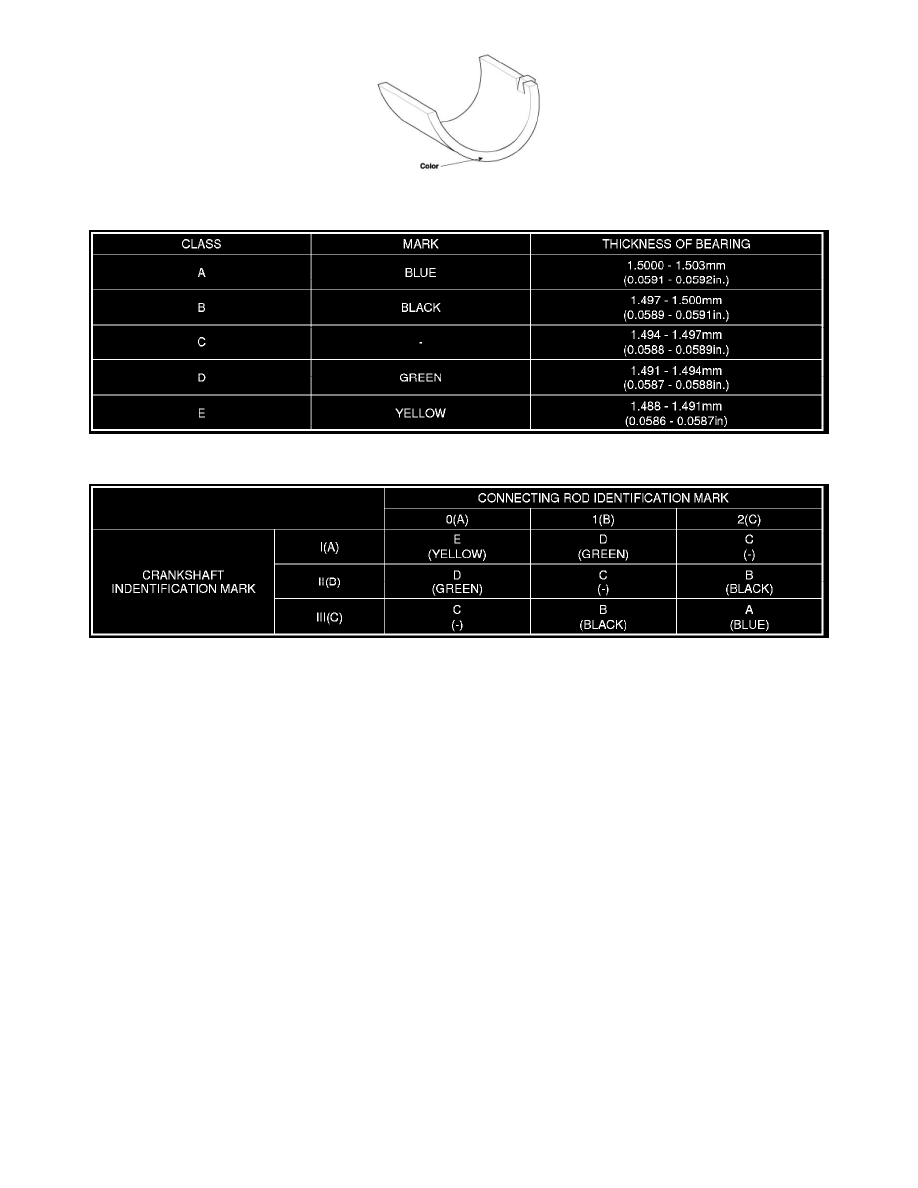Optima V6-2.7L VIN 4 (2007)

DISCRIMINATION OF CONNECTING ROD BEARING
(11) Select the proper connecting rod bearing from the table below.
3. Check the connecting rod.
(1) When reinstalling, check the cylinder numbers on the connecting rods and the caps. When installing a new connecting rod, the notches for
bearing fixing on the connecting rods and caps should face the same direction.
(2) If one or both edge of the connecting rod thrust surface is damaged, replace the rod. If the inner surface of the rod is damaged or rough, also
replace it.
(3) Using a connecting rod aligner, measure the bent or torsion of the rod. If the measurement is near the specification, adjust the rod with a press.
If the rod is bent or twisted excessily, replace it.
Bending : 0.05mm/100mm (0.0020in./3.9370in.) / Torsion : 0.1mm/100mm (0.0039in./3.9370in.)
NOTE:
When assembling the rod without a bearing, there should be no difference.
4. Check the crankshaft bearing oil clearance.
(1) To check main bearing-to-journal oil clearance, remove the main bearing caps and bearing halves.
(2) Clean each main journal and bearing half with a clean shop tower.
(3) Place one strip of plastigage across each main journal.
(4) Reinstall the bearings and caps, then torque the bolts.
Tightening torque: M8 : 15.7Nm (1.6 kgf.m, 11.6lb-ft) + 90°M10 : 29.4 Nm (3.0 kgf.m, 21.7lb-ft)+ 90°
NOTE:
Tighten the bolts in order.
(5) Remove the cap and bearing again, and measure the widest part of the plastigage.
Standard oil clearance0.004- 0.022mm (0.0002 - 0.0009in.)
